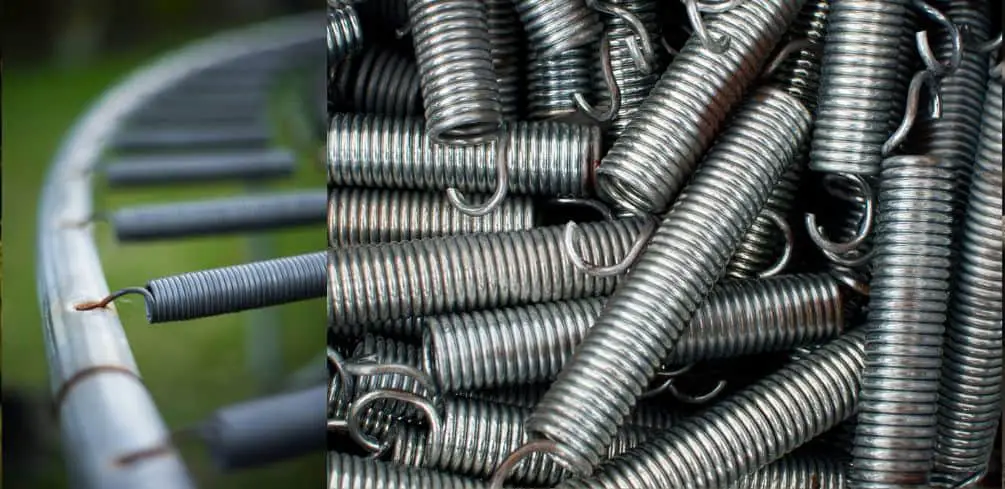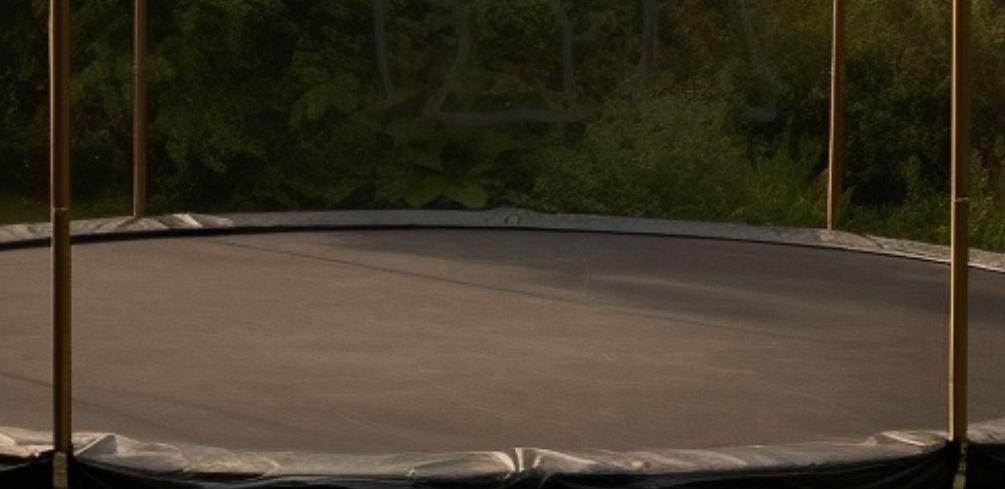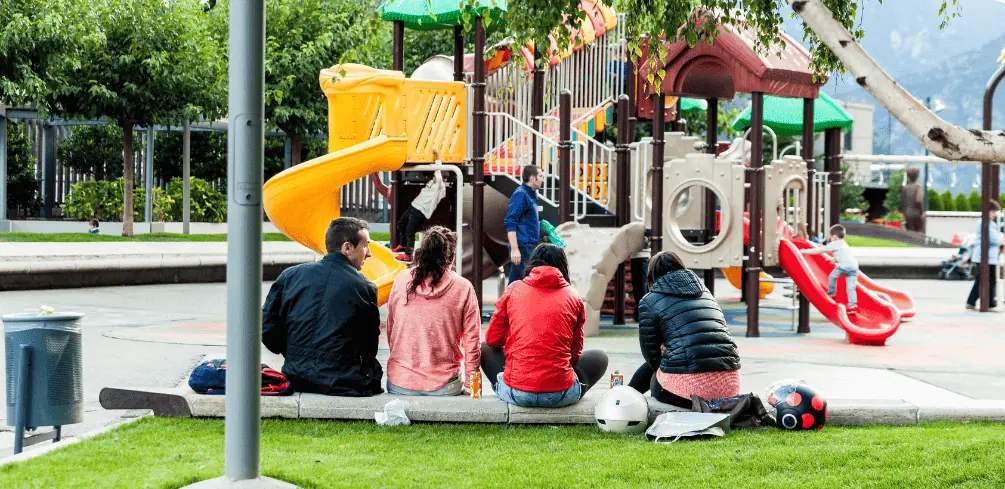Have you ever wondered what makes trampolines so bouncy and fun? Well, it’s time to dive into the construction secrets of these popular backyard toys. Trampolines are carefully engineered to provide a safe and enjoyable experience for users of all ages while also ensuring durability and longevity.
By understanding the materials that go into their making, you’ll appreciate even more how simple elements come together to create such an exhilarating activity.
Let’s dissect a typical trampoline and explore its essential components: the metal frame, spring system, jumping mat, as well as padding and enclosures for safety purposes.
The Metal Frame: Foundation and Support Of a Trampoline

You’ll love how the metal frame provides a strong, sturdy foundation that’ll keep you safe while bouncing your heart out. Metal durability is a critical aspect of trampoline construction, as it ensures the frame can withstand the force of repeated jumping and maintain its shape without bending or breaking.
Frame shapes also play a significant role in trampoline design – most commonly found in round or rectangular forms. Round frames tend to distribute stress more evenly around their circumference, while rectangular frames offer increased bounce performance due to their larger surface area.
Rust resistance is another essential feature of the metal frame of your trampoline. Exposure to moisture and various weather conditions can lead to rust formation on steel components, which may compromise the structural integrity of your trampoline over time.
To combat this issue, manufacturers typically use galvanized steel – a process wherein the steel is coated with a protective layer of zinc that prevents rusting and increases overall durability.
You’ll appreciate this added protection when you’re enjoying your trampoline for years to come. When it comes to assembly ease, modern trampolines have made leaps and bounds from their older counterparts.
Many models now feature quick-assembly designs with interlocking parts that don’t require additional tools or fasteners, making setup less time-consuming and more straightforward than ever before.
This simplicity doesn’t sacrifice strength; instead, these innovative designs ensure proper weight capacity by securely connecting each component for optimal stability during use. So jump into an exciting world of fun, knowing that the metal frame beneath you offers reliable support and lasting durability!
Spring System: Creating the Bounce

In a trampoline’s spring system, it’s the tension and elasticity of the springs that create that satisfying bounce we all know and love. The materials used in manufacturing these springs play a crucial role in determining the bounce intensity and coil durability.
Typically, trampoline springs are made from galvanized steel, providing rust resistance and extended longevity. It’s essential to consider both the length of the springs and their gauge (thickness) when evaluating their performance, as longer or thicker springs can offer a more intense bounce.
| Spring Materials | Bounce Intensity | Coil Durability |
|---|---|---|
| Galvanized Steel | High | Excellent |
| Stainless Steel | Moderate | Good |
| Alloy Springs | Low | Fair |
Over time, even high-quality springs may lose tension or become damaged due to regular wear and tear. In such cases, spring replacement is necessary to maintain your trampoline’s safety and performance.
Replacing individual damaged springs is possible; however, experts recommend replacing all of them simultaneously for consistent bouncing experience across the jumping surface. When sourcing new springs for your trampoline, ensure they match your existing ones in terms of material type, length, gauge size, and hook design.
Though traditional trampolines rely on metal coils for generating bounces, there has been an emergence of innovative springless designs in recent years which aim to provide safer alternatives without sacrificing fun.
These systems utilize flexible rods or bands made from composite materials placed under the jumping mat instead of conventional steel springs. While these designs may not offer the same level of bounce intensity as their counterparts with metal coils, they present an appealing option for those who prioritize safety concerns above all else when choosing a trampoline for themselves or their loved ones.
Jumping Mat: Strength and Elasticity

When it comes to the jumping mat, its strength and elasticity play a vital role in ensuring an exhilarating bounce and long-lasting fun for you and your family.
Material durability, UV resistance, weight capacity, weatherproof design, and stitching quality all contribute to the performance of the jumping mat.
Typically made from woven polypropylene or polyester materials, trampoline mats need to be strong enough to withstand repetitive stretching while also providing enough elasticity for an enjoyable bouncing experience.
The material used in creating trampoline mats is often treated with UV protectants to ensure that it maintains its resilience even when exposed to harsh sunlight for extended periods.
This added UV resistance not only increases the lifespan of your trampoline but also helps maintain its bounce quality over time.
Weatherproof design is another essential feature that ensures your trampoline can withstand various environmental conditions such as rain, snow or extreme heat without compromising on safety or performance.
Additionally, weight capacity is a crucial factor when selecting a trampoline mat; it should be able to support the maximum weight of intended users safely.
Stitching quality plays an integral part in maintaining the overall integrity of the jumping mat.
High-quality stitching prevents fraying and provides additional reinforcement at critical stress points – this will give you peace of mind knowing that your trampoline remains safe even after years of use.
Pay attention to these factors when choosing a trampoline: material durability, UV resistance, weight capacity, weatherproof design, and stitching quality are all essential components that contribute to a sturdy yet elastic jumping mat capable of delivering hours upon hours of entertainment for you and your loved ones.
Safety Features: Padding and Enclosures

Safety features, such as padding and enclosures, are of utmost importance for trampolines, providing a secure environment to prevent accidents while still allowing users to have loads of fun. Adhering to safety regulations is crucial, as it helps minimize the risk of injuries caused by falling off or landing on the frame and springs.
The material quality used in these features directly impacts their effectiveness in protecting users.
- Padding Durability: The padding that covers the springs and frame should be made from high-quality materials that can withstand constant use and weather conditions. UV-resistant PVC or vinyl are common choices due to their durability and resistance to tearing. Properly maintained padding plays a significant role in absorbing impact and preventing direct contact with hard surfaces.
- Enclosure Installation: Safety enclosures, also known as safety nets, are designed to keep jumpers within the jumping area. These should be made from durable materials like polyethylene mesh and feature a secure attachment system using clips or ties, ensuring stability during use. Double-check that your enclosure meets ASTM (American Society for Testing and Materials) standards for added assurance.
- Maintenance Tips: Regular inspection of both padding and enclosures is essential for maintaining safety levels. Look out for signs of wear and tear like fraying on netting or cracks in padding – address any issues promptly by repairing or replacing damaged parts.
Understanding the significance of these safety features will help you make an informed decision when purchasing a trampoline or upgrading an existing one.
A well-maintained trampoline with high-quality padding and enclosures not only prioritizes user safety but also prolongs its lifespan – giving you peace-of-mind knowing your family can enjoy countless hours of bouncing fun without compromising their wellbeing.
So always invest time in researching various products’ material quality, installation process, and durability factors before making your final choice; this way, you’ll ensure endless entertainment while adhering to necessary precautions.
Conclusion
In conclusion, you’ve now explored the essential components of trampolines, from the sturdy metal frame that forms its foundation to the spring system generating that exhilarating bounce. You’ve also delved into the jumping mat’s strength and elasticity. Additionally, you have examined vital safety features like padding and enclosures.
So next time you’re enjoying a thrilling bounce on a trampoline, take a moment to appreciate the intricate engineering behind it. It provides you with endless fun while ensuring your safety.





